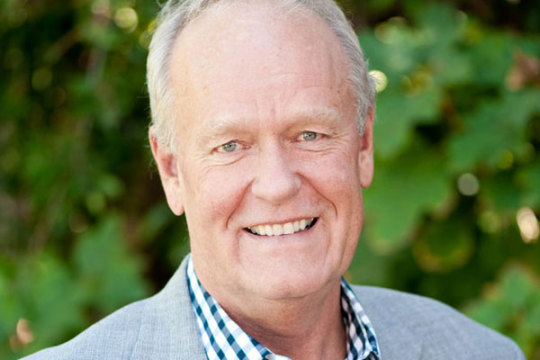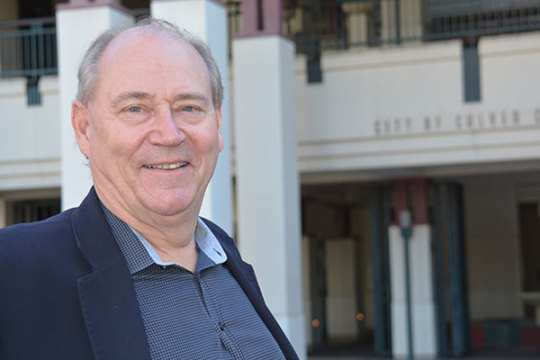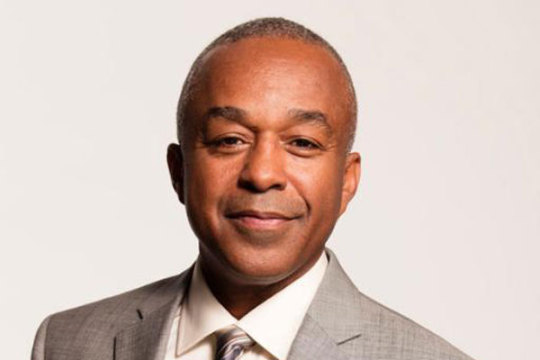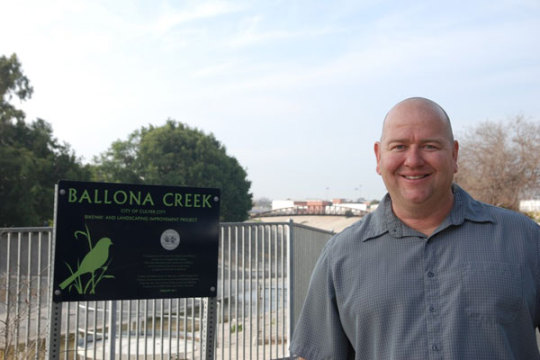
Candidate campaign page: http://www.wyant4council.com/
Scott Wyant has a keen understanding of the long-term goals to provide Culver City with more diverse mobility options. As a Culver City Planning Commissioner, he supported incorporating needed bicycle connections into the design for the Expo Line-adjacent Ivy Station development project. Also a former member of the committee overseeing development of Culver City’s Bicycle and Pedestrian Master Plan, Mr. Wyant has deep knowledge and experience with the opportunities and challenges for implementing livable streets in Culver City. We have some concerns with Mr. Wyant’s hesitancy to prioritize the safety and mobility needs of vulnerable road users above the convenience of drivers passing through Culver City, and hope to see him continue to develop a platform and strategy that puts safety first. With his depth of experience and understanding, Scott Wyant will make a strong advocate for a more multi-modal Culver City.
Bike The Vote L.A. 2016 Grade: A-
(See below for full candidate questionnaire response)
1. What would an ideal transportation system for Culver City consist of? What mode options, considerations for people of different ages and abilities, and innovative features would that transportation system include?
Wyant: An ideal transportation system for Culver City would be multi-modal, with a focus on shared transport, walking and biking. For the purposes of this document, please assume that when I talk about “biking,” I’m referring to the casual bicyclist, rather than the dedicated cyclist who travels everywhere on two wheels. If we can get casual cyclists to opt for a bike on 10% of their trips, we can make a huge difference in traffic, air, health and safety problems. Culver City, like most urban areas, is also experiencing an explosion of interest and participation in such transportation sharing services as Uber and Lyft. These services have their downsides, but if properly managed they can improve the fabric of Westside transportation – especially given the new Metro station.
2. With so many people on foot and on bike killed each year while commuting in Los Angeles County, the City of Los Angeles recently adopted a “Vision Zero” policy to work towards eliminating traffic deaths in the City of L.A. by 2025. Would you support adopting Vision Zero for Culver City?
Wyant: From the website link you provide, it is clear that Los Angeles is adopting a data-driven approach to VisionZero, and I would support such an approach in Culver City. We have a much less complicated and more constrained system of roadways than LA, and most of our streets are extremely narrow, which presents engineering challenges. We need to take a formal look at what we can and cannot do to encourage more walking and cycling, while keeping in mind that many of our citizens are not able to walk or cycle to the places they need to go.
3. Culver City is considering implementing protected bike lanes – bike lanes separated from vehicles by a physical barrier – in two key locations: 1) on National Blvd to close the gap between the two halves of the Expo Bike Path that extend to USC/Expo Park to the East and Santa Monica to the West, and 2) on Washington Blvd connecting the Expo Line Culver City station to Downtown Culver City. Do you support these projects, which may require a dedication of developer land and/or a reduction of on-street car parking spaces?
Wyant: If I read this question correctly, you are describing exactly the solution that the Culver City Planning Commission (of which I am a member) imposed on the developer of the new Ivy Station development rising on the Metro station parking lot at the corner of National and Washington. Those bike lanes (and bike boxes) are part of our Conditions of Approval for the project – conditions that I advocated and supported, along with plentiful bike parking (both long and short term) throughout the project.
4. Would you support bringing a bike share system to Culver City, and if so, what will you do to expedite its installation?
Wyant: I have supported a bike share system in Culver City for 5 years, since we visited my daughter in Barcelona and saw the system in action. I’ve also used bike shares in Denver and San Francisco, and I know they work. As the Chair of the Chamber of Commerce Transportation Task Force, I have actively lobbied for a bike share system, perhaps in concert with Los Angeles or Santa Monica. One of the problems we face is that for many people who might want to use a shared bike system, their destination lies outside the city (Venice Beach, Manhattan Beach, the Marina), and we have to come up with a way to allow them to drop off their bikes in those locations. The city is in talks with both Santa Monica and Los Angeles about this situation, and I will continue to participate in those discussions, once I am elected.
5. The City Council recently voted to prioritize vehicular travel through Culver City over providing pedestrian access for local residents to businesses and Culver City Park. Do you support the removal of crosswalks at Duquesne & Jefferson and Summertime Lane/Jordan Way & Jefferson?
Wyant: This is a situation where the present meets the future. Traffic is backing up on Duquesne all the way to Washington Blvd., which in turn causes gridlock on traffic moving through the whole downtown neighborhood, resulting in cut-through traffic on formerly quiet streets. Until we can address the issue of people who use Culver City streets as an alternative to the freeway, we have to make hard choices. Personally, I would have preferred to see a more creative solution – perhaps a green light for pedestrians for 10-15 seconds before the green light for autos, followed by a longer light for those cars to turn onto Jefferson. The letter writer in your link also suggests traffic circles on Jefferson – an idea I think has merit, and that I would encourage Public Works to explore
6. Do you presently bike in Culver City? What are your experiences, or if not, what would it take to make you feel comfortable biking on city streets?
Wyant: I do bike in Culver City. I was the founding secretary of the Culver City Bicycle and Pedestrian Master Plan Committee. I consider myself a “casual” bicyclist, one who needs to be encouraged to bicycle rather than just grab the car keys. My wife and I also walk a lot. That said, I will NOT cycle on any street which I know to be heavily traveled by cars – Braddock Ave., for example. The pleasure is taken away from the experience, and I bike for pleasure. I cannot help but think of the Mayor of Los Angeles, cycling in a large group, in a bike lane on Venice Blvd. who STILL got “doored.” Unfortunately, most Culver City streets are far too narrow to allow for a lane of traffic, plus a dedicated bicycle lane. Where it’s feasible, I’d support such lanes – but those feasible places are rare.



